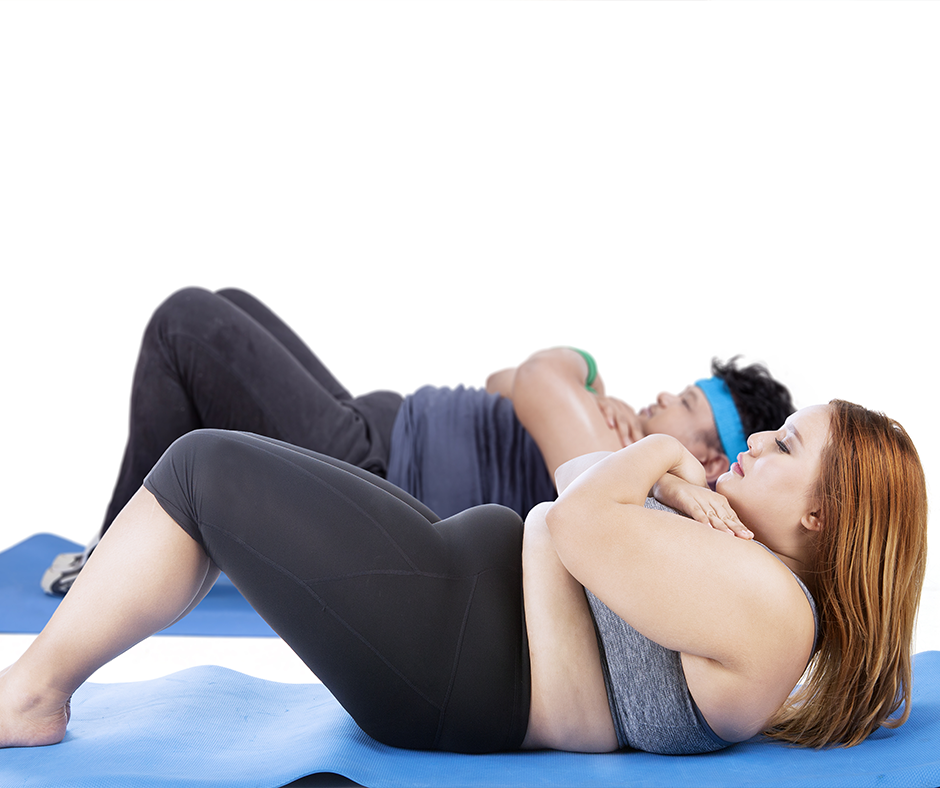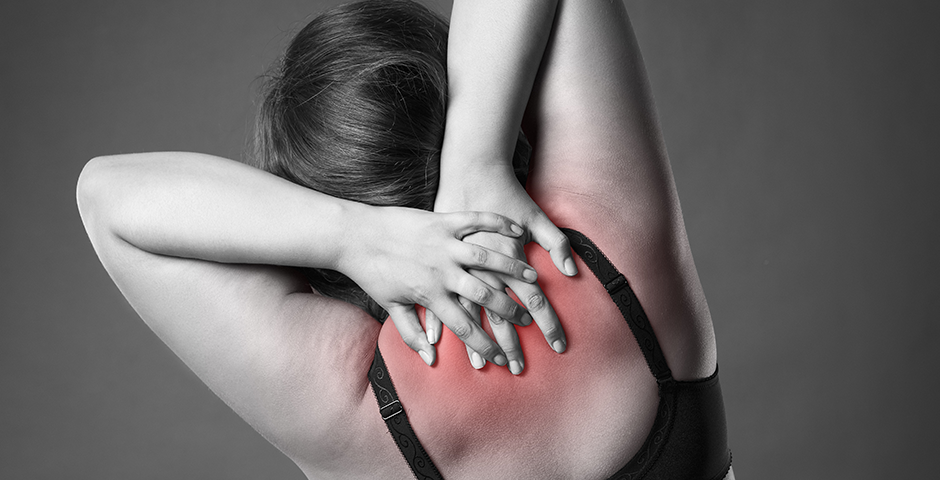
15 Minute Full Body Workout
August 4, 2017
Is Your Relationship Making You Overweight?
August 7, 2017Stop what you are doing, and take a moment to notice that dull, constant ache in your back, or tension pain in your neck and shoulders. Because of back pain, you might be finding it difficult to get through the things you are doing right now, and it may be interfering with what you have planned for the rest of today.
We know that around 8 out of 10 people will experience back pain at some point in their life. Sometimes the pain can last a long time, or subside and then return periodically. Back pain is disruptive to your daily life, and can get in the way of getting fit, healthy, and losing weight. So why do we get back pain in the first place? Let’s look at 5 of the top causes of back pain.
1: Working a Desk Job
Whether working, studying, or spending the day on the couch, sitting all day is a recipe for back pain due to bad posture. Chances are you are slouching, and your chair might not be at the correct height to promote the neutral spine position. You’re definitely limiting your daily movement, even if you are monitoring your posture. Sedentary lifestyle has been linked to a higher risk of heart attack, stroke, metabolic syndrome and earlier death, as if back pain wasn’t bad enough!
To prevent deterioration in your posture, take regular breaks, go for a walk, or stretch yourself to get out of that seated position, ideally every 20 minutes. When you are working, practice sitting with correct posture. Adjust the seat to maintain the natural curve of your lower spine. As you stretch, focus on moving your head, neck, and shoulders in the opposite direction to your usual slightly slouched position.
2: Muscle Imbalances
Muscles, joints, and bones work together, and cannot properly function well if any are out of alignment. The muscles support bones and movement, and the joints allow range of motion and cushion the impact of movement. Tight muscles in one area and weak muscles in another, abnormal motion from stiff joints, and muscles tensing as a protective mechanism when experiencing pain, can all results in joint being pulled out of alignment.
The best chance at prevent this muscular imbalances is to include exercises to strengthen weak muscles, stretches to loosen tight and overly tense muscles to allow for strong, healthy joints. When your joints are properly aligned, this makes your daily activities easier to perform, reducing pain, and improving the quality of your life.
3: Degenerated Discs
Spinal discs can start to degenerate over time, most likely due to a small injuries to the disc as time passes. This may be asymptomatic at first, but the pain doesn’t worsen until more substantial damage is inflicted. Disc degeneration can be just a natural part of ageing, but early degeneration can result from abnormal motion in the degenerated disc (such as too much pressure on one side of the disc from poor posture), which creates an inflammation. For someone who feels pain, limiting bending, lifting, twisting motions, or sitting for hours can help minimise pain.
In the event that pain is chronic and affecting your every day life, you may choose to seek treatment. Physical therapy guided by your physiotherapist, could include a program of stretches, low-impact exercises, and specific strength and conditioning exercises. This is a great first-line treatment option when you’re experiencing pain, and can help build weak muscles and relieve tension. Gentle workouts, such as yoga or swimming, can also help. Another at-home option is to apply alternating hot and cold compresses to sore areas.
4: Incorrect Lifting
Does your lifting style involve curving your spine forward to grab an object, then straightening your back as you lift? This is a common mistake, and a top source of back pain. Lifting in this manner forces your back muscles and spine to take the brunt of the burden, which they aren’t designed for. Add any sort of twisting action while you lift, and you are drastically increasing your risk of causing damage. The back muscles can easily be strained when lifting heavy objects.
The proper lifting technique is to bend your knees and hips until you are squatting. Keep the spine straight while grabbing the object. Then lift with your leg muscles by straightening your knees and hips. Keep the object close to your belly button (your centre of gravity) and avoid twisting sideways or leaning backwards.
5: Stress/tension
Stress can not only negatively influence your emotional state, but also your physical state. Stress can make you perceive your level of pain as being higher. When we are under stress, we may also change our behaviour (like sitting at a desk for long periods trying to fix a problem) and posture- including the way we sit, the way we move, and the way we sleep.
Stress relieving strategies may be helpful improving your tolerance to back pain, as well as relieve some of the tension causing the back pain in the first place. Meditation, even just for 5-10 minutes, can help ease anxiety and muscular tension. Talking to other people about issues you are having can allow you to vent, and release negative emotions. Lastly, laughter is one of the very best ways to relieve stress and tension, so by all means, get giggly!
Back Pain Summary
We hope some of the strategies we have given to you will help reduce pain, making it easier for you to reach your goals to lose weight, be healthy, and get fit. Healthy living is a combination of many things that includes good nutrition, regular exercise and positive attitude. Pain can certainly make it more difficult to feel motivated to take positive action. By simply being aware of your posture, muscular tension, emotional state, and taking some steps to manage your pain conservatively you may find your back pain starts to ease.





